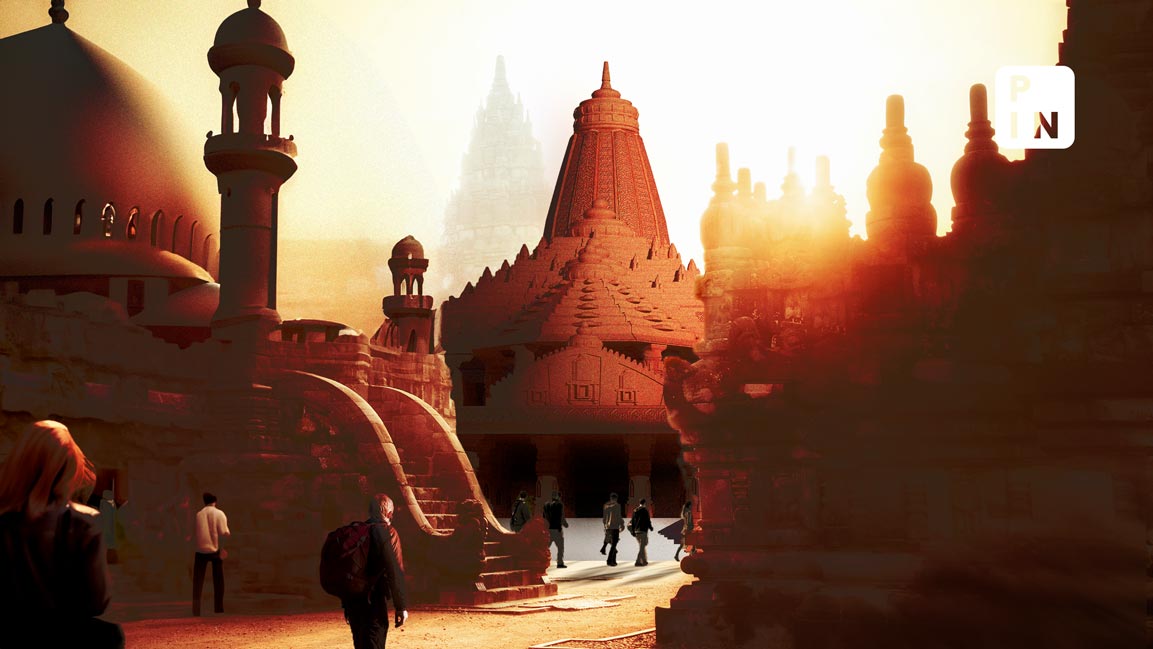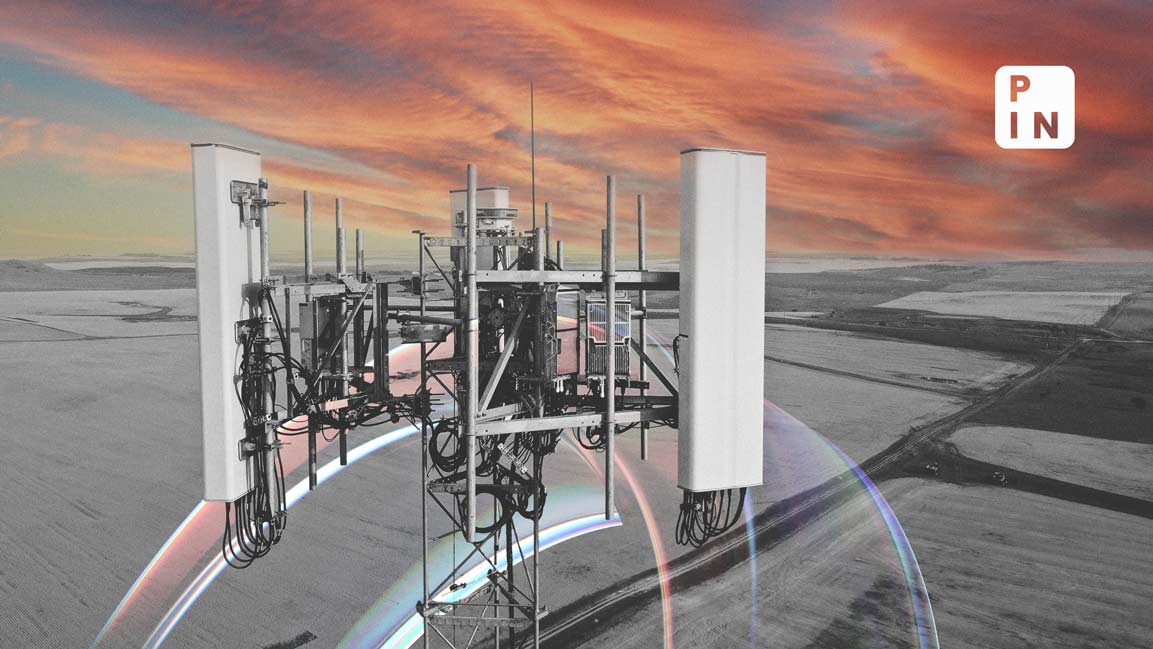- | 7:53 pm
Boom in religious tourism seen rubbing off on local economies
As India’s spiritual sanctuaries draw devotees by the millions, the pilgrim surge is seen boosting jobs, infrastructure, and small businesses

The grand consecration of the Ram temple last month catapulted Ayodhya onto the global tourism stage. The day saw the temple town bustling, with about 100 chartered flights filled with the country’s who’s who crowding the local airport.
The event, which was organized at the birthplace of Hindu deity Ram, has given the Indian temple economy a much-needed shot in the arm.
Latching onto the religious fervor, state-run ticketing and tourism services firm IRCTC Ltd this week flagged off its inaugural Ramayana circuit train.
The Ramayana Yatra train, which commences its journey from Delhi, will wind through some of the sacred sites associated with the ancient Indian epic, the Ramayana. Over 19 days, it will traverse key locations, including Ayodhya, Prayagraj, Nandigram, and Janakpur in Nepal.
The significant role of religion in the lives of Indians, as shown by a booming temple economy, is corroborated by a 2021 Pew survey, which found that religion is very important to a vast majority across faiths.
Spirituality is projected to be one of the biggest growth drivers of the tourism sector in the next five years, Ritesh Agarwal, chief executive officer of hotel aggregator OYO Rooms, posted on X (formerly Twitter) ahead of the inauguration of the Ram temple.
The size of the faith-based tourism market in India was $1 billion in 2023, market researcher Future Market Insights (FMI) estimated, while projecting an average annual growth of 16% to $4.6 billion by 2033.
The market researcher indicated that religious tourism accounted for up to 11% of the overall tourism sector, which contributed about 5% to the country’s gross domestic product (GDP).
In 2022, the tourism industry contributed ₹15.7 trillion ($215 billion) to the Indian economy, a 1% increase from pre-covid 2019, the World Travel and Tourism Council (WTTC) said in a report.
Over the next decade, India’s travel and tourism GDP is expected to grow annually at an average 7.8%, ahead of a projected 7% for India’s overall economy, to about ₹33.8 trillion ($457 billion), or 7.2% of the total economy, WTTC said.
Culturally diverse
High growth in tourist footfall at religious places is a recent phenomenon, Prateek Hira, chairman of the Indian Association of Tour Operators (IATO) and industry lobby Ficci’s tourism committee, said.
“Post-covid, when people worldwide saw death from close quarters, they were drawn to spirituality,” Hira said.
From Goa’s Basilica of Bom Jesus, Rajasthan’s Ajmer Sharif Dargah, Amritsar’s Golden Temple, to the Vaishno Devi Temple in Jammu and Kashmir, India’s religious tourism sector is as culturally diverse as it is expansive.
However, despite boasting a diverse culture and a rich architectural heritage, India had a mere 1.2% share of the global tourism market in 2019 as against Spain’s 5.7%, US’s 5.4%, and China’s 4.5%, government think tank NITI Aayog said in a January 2022 report.
The think tank blamed inadequate infrastructure and poor connectivity, safety and security for low tourist turnout in the country.
India had, in fact, slipped from 46 to 54 on tourism competitiveness in the World Economic Forum’s Travel and Tourism Development Index 2021, which came against the backdrop of the covid pandemic.
To give a fillip to the temple economy, the government had launched the Pilgrimage Rejuvenation and Spiritual Augmentation Drive, or PRASAD, scheme in fiscal 2015.
The tourism ministry has sanctioned 76 projects under the scheme since its inception, sanctioning about ₹5,315 crore, of which ₹4,700 crore has been released till the end of 2022.
Temple donations
India’s spiritual sanctuaries have not only drawn millions of devotees but have also attracted significant donations, pointing to a robust trend in religious philanthropy.
The Shri Ram Janmabhoomi Teerth Kshetra Trust, which was formed in February 2020 to build and maintain the Ram temple in Ayodhya, has collected about ₹3,500 crore in donations, The Economic Times reported last month.
In 2021, Ambaji in Gujarat collected $490 million in 2021, while Vaishno Devi Temple in Jammu and Kashmir received $241 million, the FMI report said, adding that the Golden Temple in Punjab received $84 million, and the Tirumala Tirupati Devasthanam in Andhra Pradesh collected $3.68 million
Besides cash, the Shirdi temple in Maharashtra received about 380 kg in gold donation, while the Tirupati temple in Andhra received 130 kg gold in 2021, the FMI report added.
Donations to the Kashi-Vishwanath temple in Varanasi have surged. The opening of the Kashi-Vishwanath corridor in December 2021, which made the temple larger and easier to access, tripled visitor numbers, Sunil Kumar Verma, a former top officer at the Kashi Vishwanath Dham, said.
Last year, the temple received about $122 million in donations, including $61 million in cash, FMI said in its study.
Social media as amplifier
Laxmi Sharath, a traveler and blogger, who visited the Kashi Vishwanath Dham after it was thrown open, said, “Earlier people would visit temples to perform family ritual. These annual visits to family deities formed an important event for Indian families.”
Nowadays, social media plays a role in popularizing the rich heritage, history, and divinity associated with places of religious and spiritual importance,” Sharath said.
In recent times, Sharath said, there is a huge change in accessibility and ease of movement of devotees.
After the opening of the Kashi Vishwanath corridor, Sharath said visiting the sanctorum has become more systematic and organized despite massive queues. Devotees can walk to the temple through the market or enjoy boat rides near the Ganga ghat—the flight of steps leading to the river.
“The premises are clean, unlike before,” Sharath said. “There is an upsurge in tourists and devotees thronging Kashi temple due to infrastructure uplift, ease of movement, and better accommodation facilities.”
Jobs boost
Meanwhile, besides generating revenues for religious sites, heavy inflow of tourists and devotees creates hundreds of thousands of direct and indirect jobs.
“Religious tourism directly and indirectly employs around 600,000 people in Kashmir in the peak months of Amarnath Yatra (June-August). Whether they are religious places or health resorts, Kashmir continues to attract millions of domestic and foreign visitors each year. The government has also taken steps to improve arrivals by introducing helicopter services between Sonamarg and Pahalgam,” Mushtaq Chaya, president of the Hotel Owners Association of Kashmir, said.
About 70 million jobs were created across the country in the tourism sector in fiscal 2021-22, up from 68 million in the previous year, Union tourism minister G. Kishan Reddy told Parliament on Thursday, 8 February.
Author Sandeep Singh, who released his two books on temple economics last month, said growing footfall at religious places is directly proportional to an expanding population.
As the level of education grows, more and more people try to return to their roots and, thus, opt to visit religious places, Singh said.
The science of temple architecture, long ignored, is also now attracting visitors, Singh noted, using the Mahalaxmi temple in Kolhapur, Maharashtra, as an example.
Here, the sun’s rays touch the deity’s feet and gradually ascend to the face during Dakshinayana — the period between summer and winter solstices — and Uttarayan, which marks the sun’s northward journey, he said.
Mingling with the crowd
Some destinations are popular among tourists of all walks. The Sri Harmandir Sahib, or the Golden Temple, in Amritsar is popular not just among Sikhs.
“The best thing about this place is that people of all faiths visit from different parts of the world, particularly from Canada where Sikhs are settled in huge numbers. We have 2,500 employees to help visitors in whatever capacity we can,” Harjinder Singh Dhami, a member of the Golden Temple committee in Punjab, said.
Ajmer Sharif dargah in Rajasthan, the tomb of revered Sufi saint Moinuddin Chishti, is also a popular destination.
“From Kashmir to Kanyakumari, and other countries, people of all age groups visit and pay obeisance here,” Khawaja Zafar Chisti, a member of the Ajmer Dargah committee, said.
In 2022, about 6.2 million foreign tourists landed in India, a more than 300% jump over the previous covid-affected year, accounting for foreign exchange earnings of $20 billion, ministry of tourism data showed.
“Buddhist circuits in western India, temples in southern India, pilgrim places in northern India and architectural heritage sites in Karnataka and Tamil Nadu saw most footfalls of foreign tourists,” archaeologist and ecologist Saili Palande-Datar said.
“Tourists from South Asian and Buddhist countries such as Japan visit India in groups, exploring ancient footprints of Buddha, whereas yoga practitioners, students of religion, drama, and art visit India seeking out ancient and early medieval sites,” she added.
A study by budget hotel chain Oyo said Amritsar and Haridwar saw strong growth in religious tourists, while Mathura in Uttar Pradesh, and Madurai in Tamil Nadu are emerging as new spiritual destinations.
But the increasing footfall at religious sites, however, creates problems of boarding and lodging, especially in peak season.
IATO’s Hira said high-end hotels such as Bridge Rama have come up in Varanasi, where stay facilities were earlier restricted to primarily modest dharamshalas. A dharamshala is a shelter or rest house for pilgrims.
However, despite the construction of several mid- and high-end hotels, dharamshalas and tents, finding an accommodation in Varanasi during peak season is still a challenge.
How does the future look?
Dirty accommodation, apart from an inconvenient traveling experience, may soon become a thing of the past as infrastructure facilities improve and more people air their experiences, both positive and negative, on social media.
According to some analysts, the growth of digital media and technology is changing how tourists plan their visits to religious sites. Online booking facilities, virtual tours, and social media are becoming increasingly popular among tourists.
The government and the tourism industry have recognized the importance of religious tourism and are taking steps to develop and promote various religious sites across the country.
This includes the development of infrastructure such as better roads, transportation, and accommodation, as well as the promotion of lesser-known destinations to encourage more tourists to visit, FMI said.
“The future of religious tourism in India looks promising. One primary reason for growth in religious tourism is India’s rich, cultural, and religious heritage. The government’s continued commitment to developing and promoting the sector will drive growth and make it a significant contributor to India’s economy in the coming years,” the FMI survey said.













